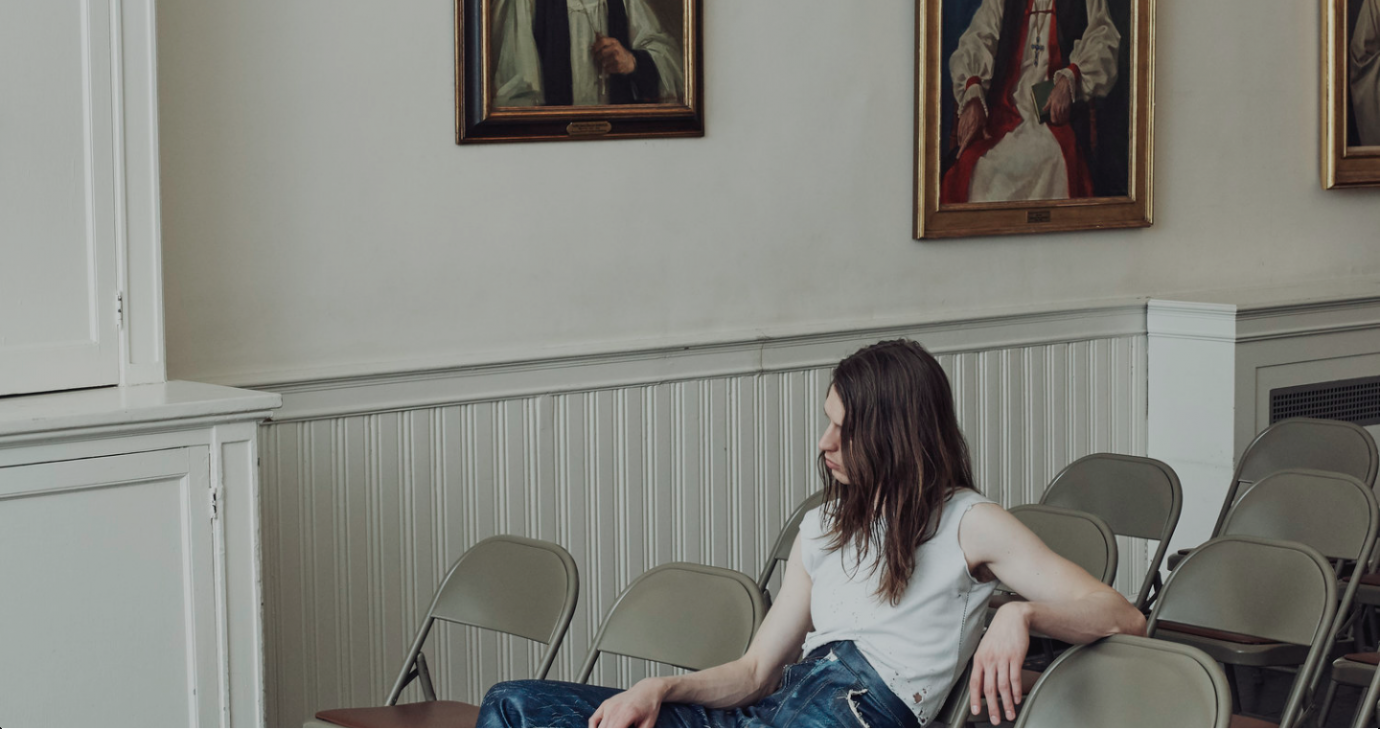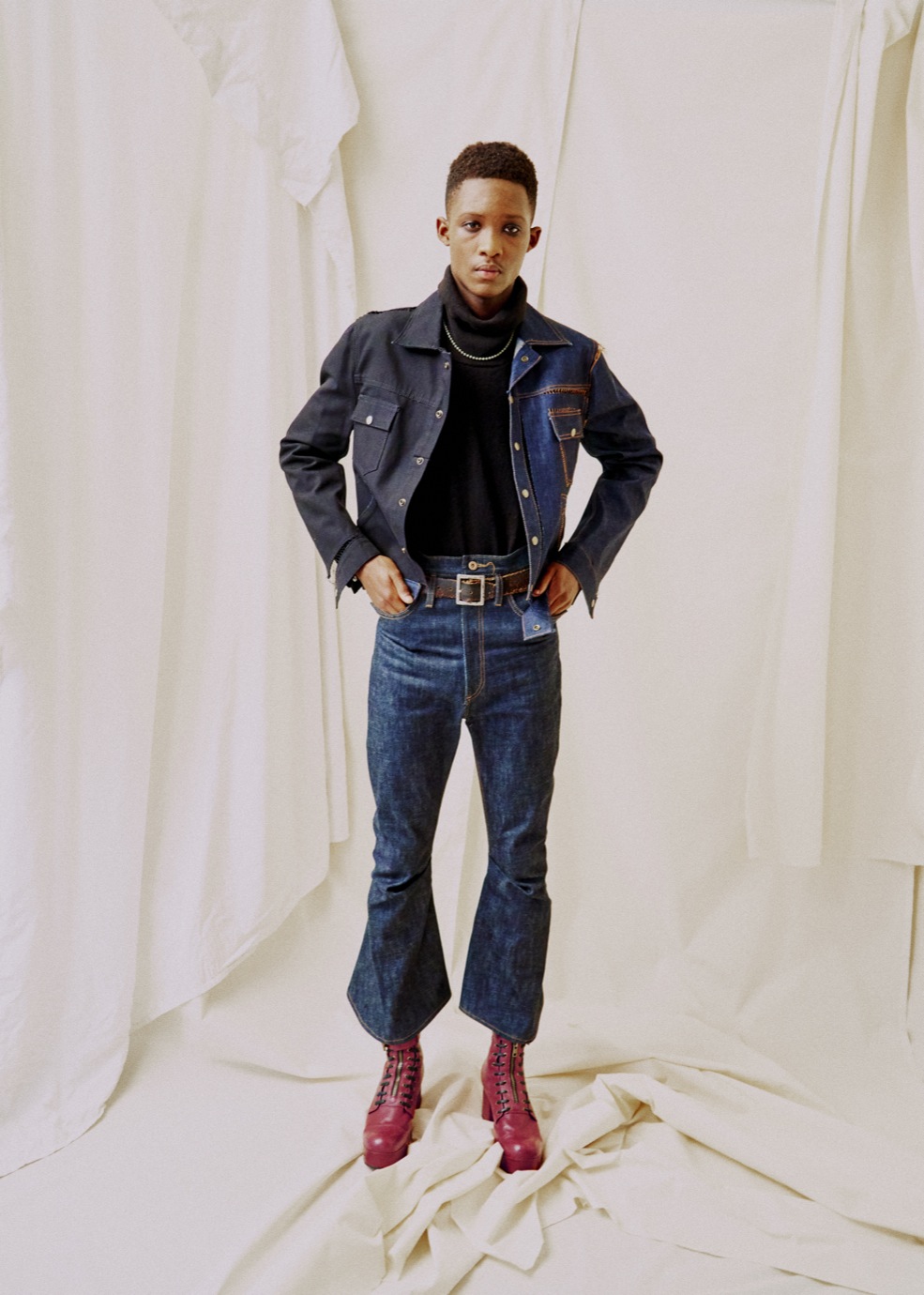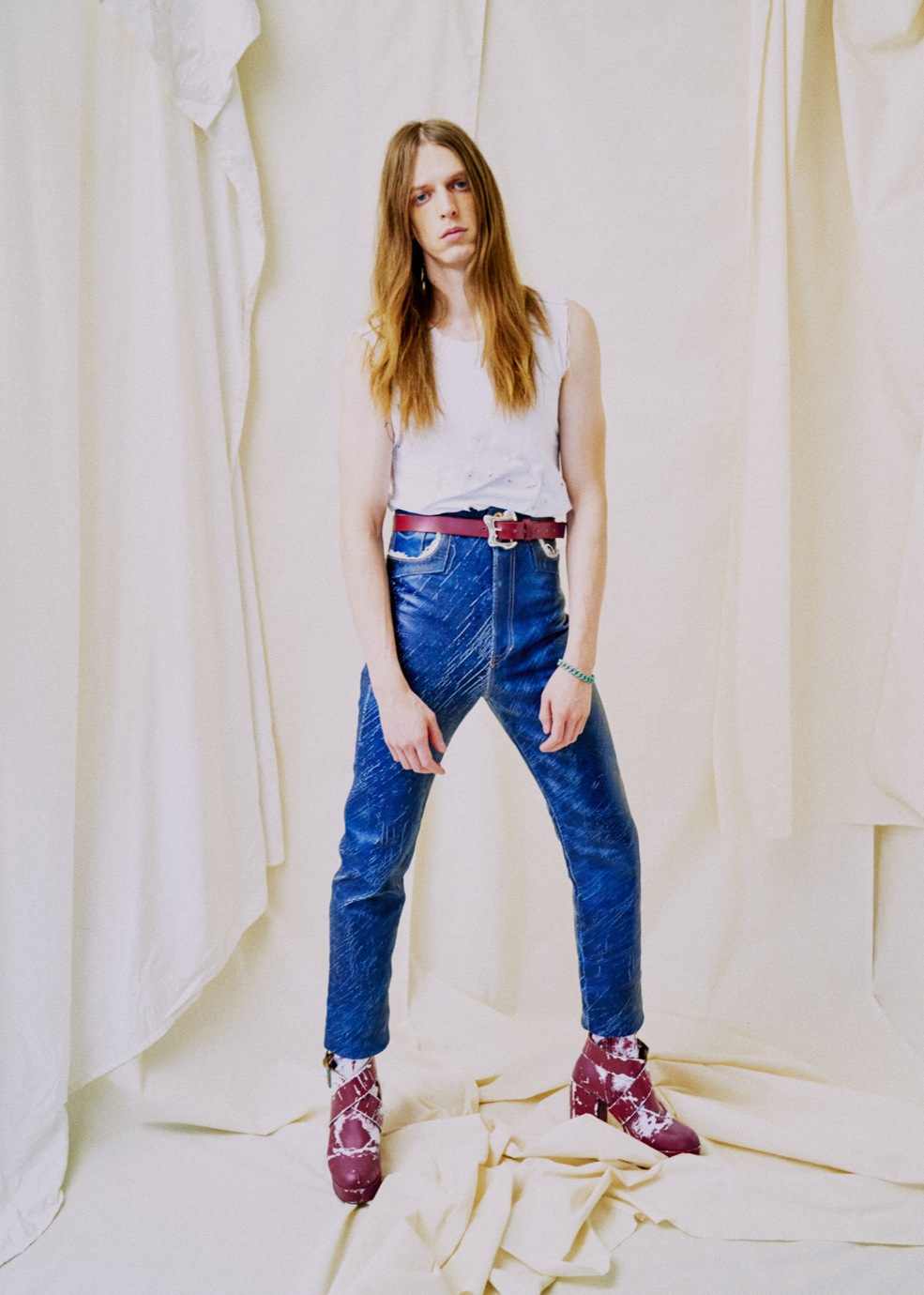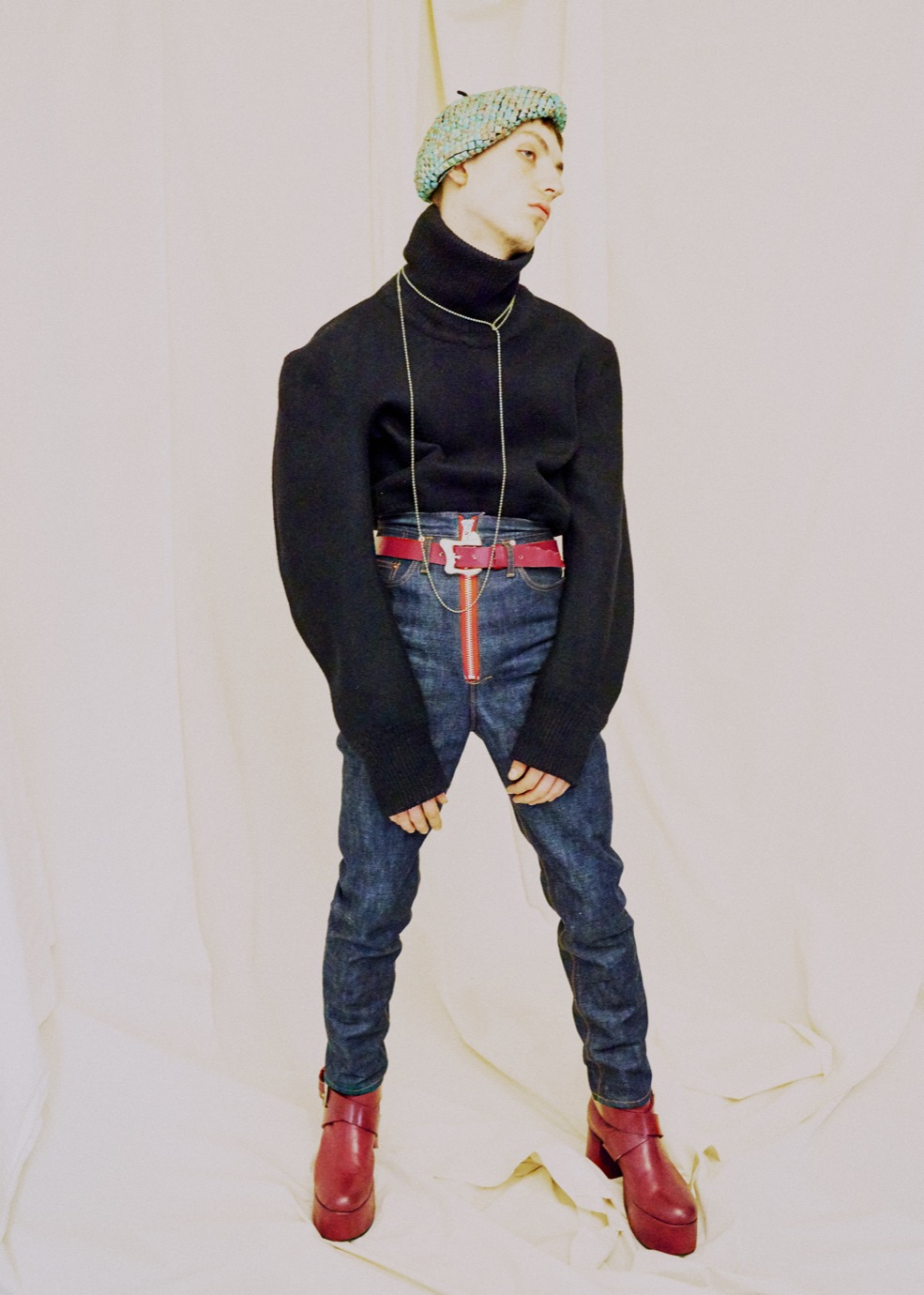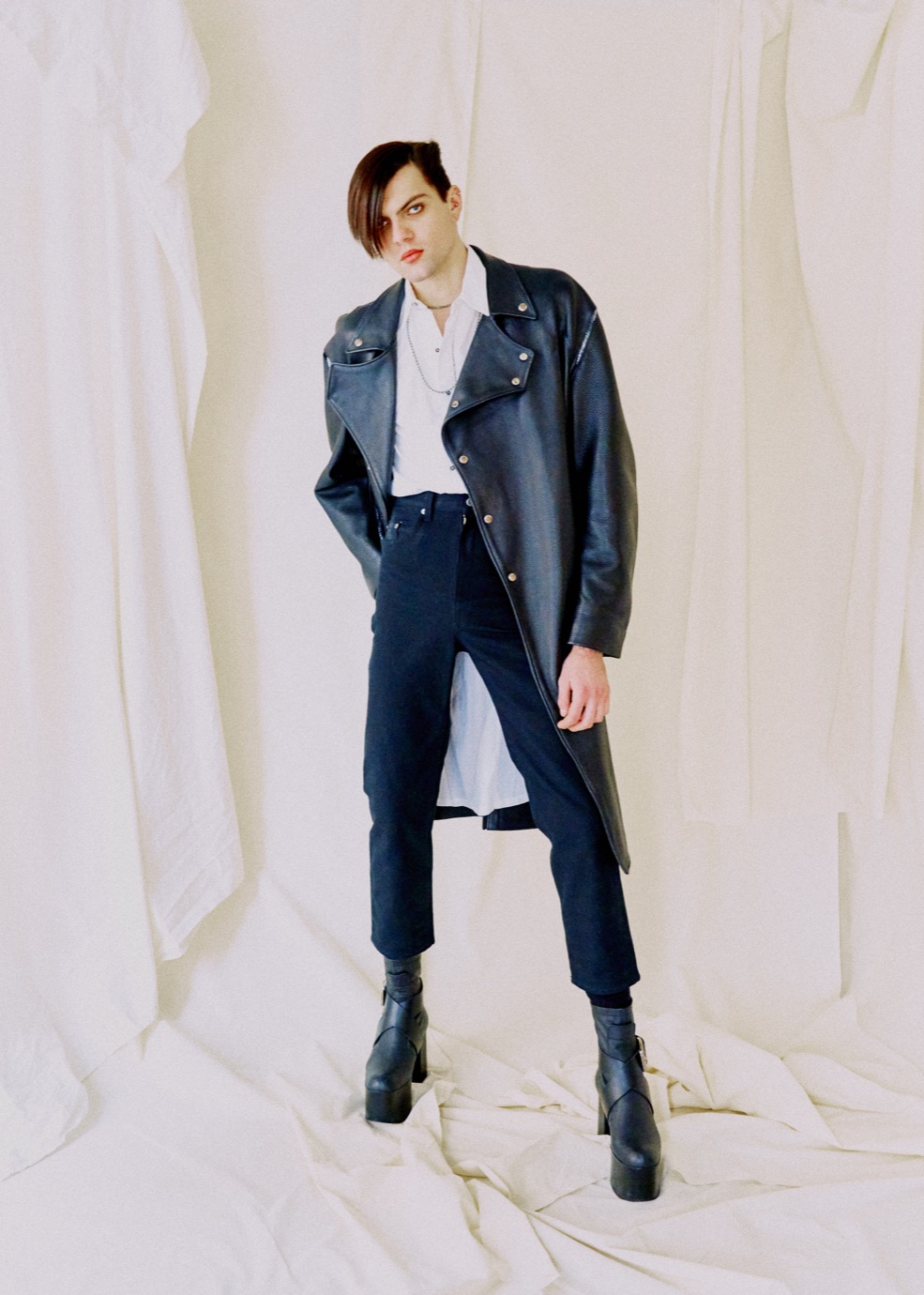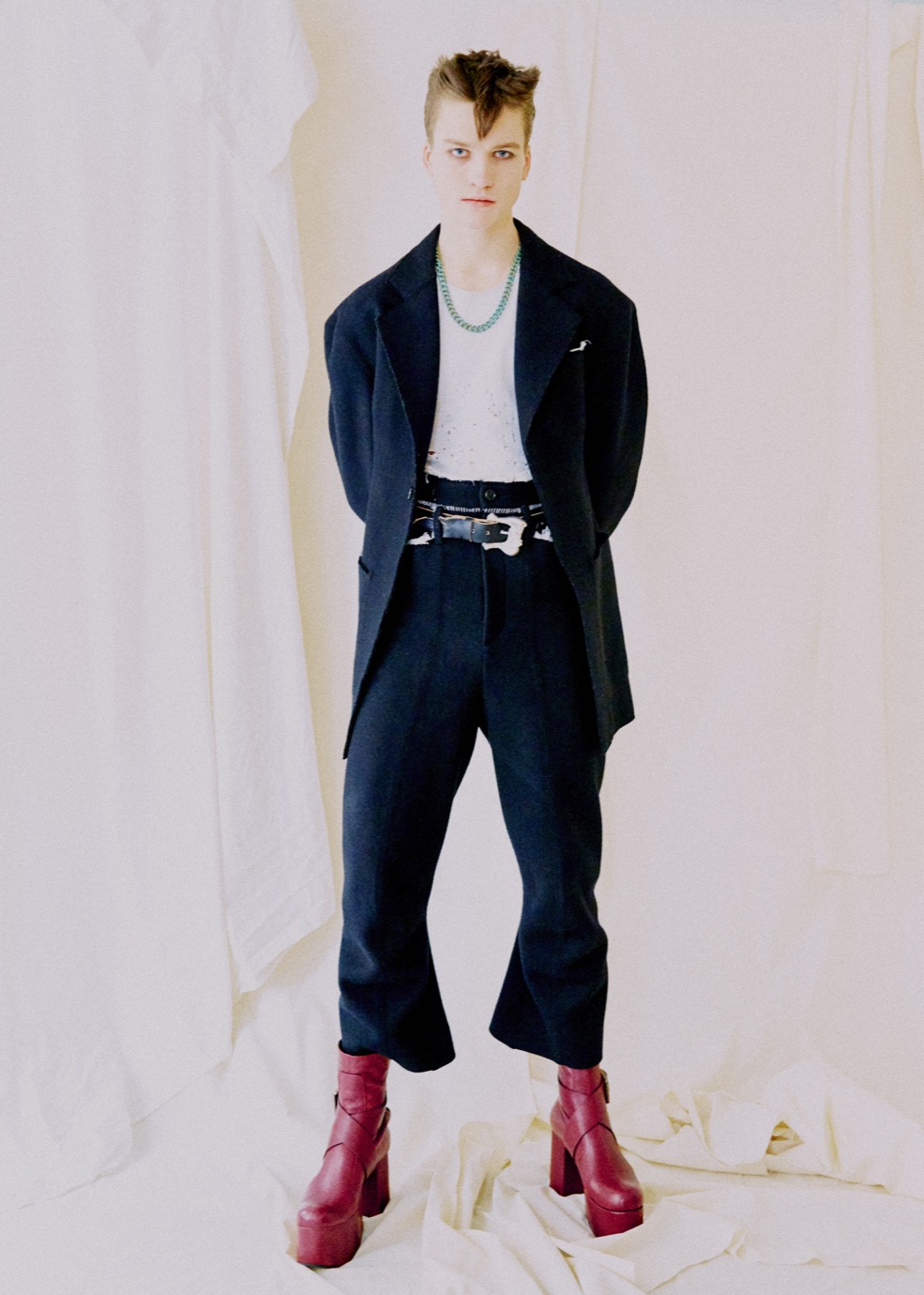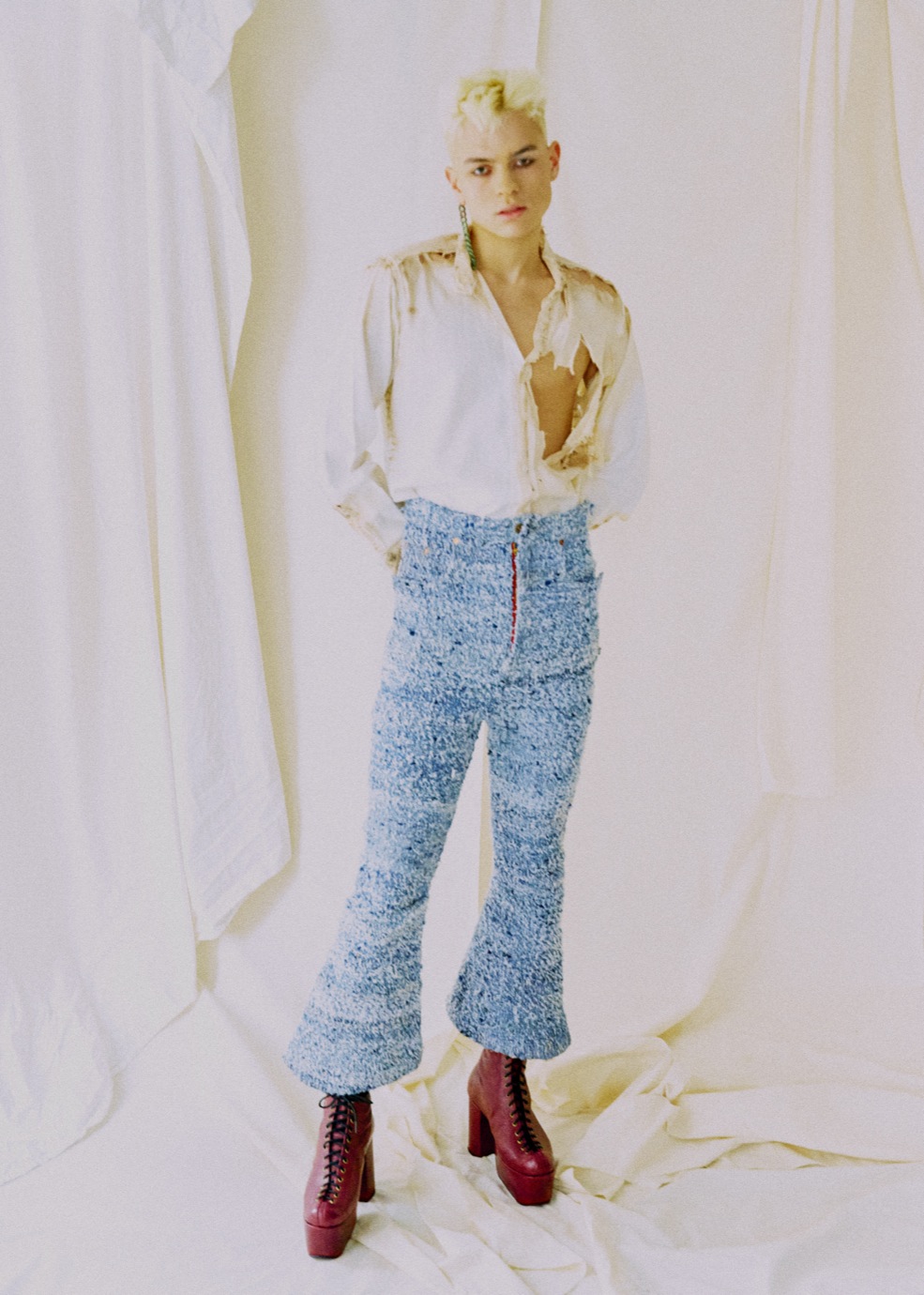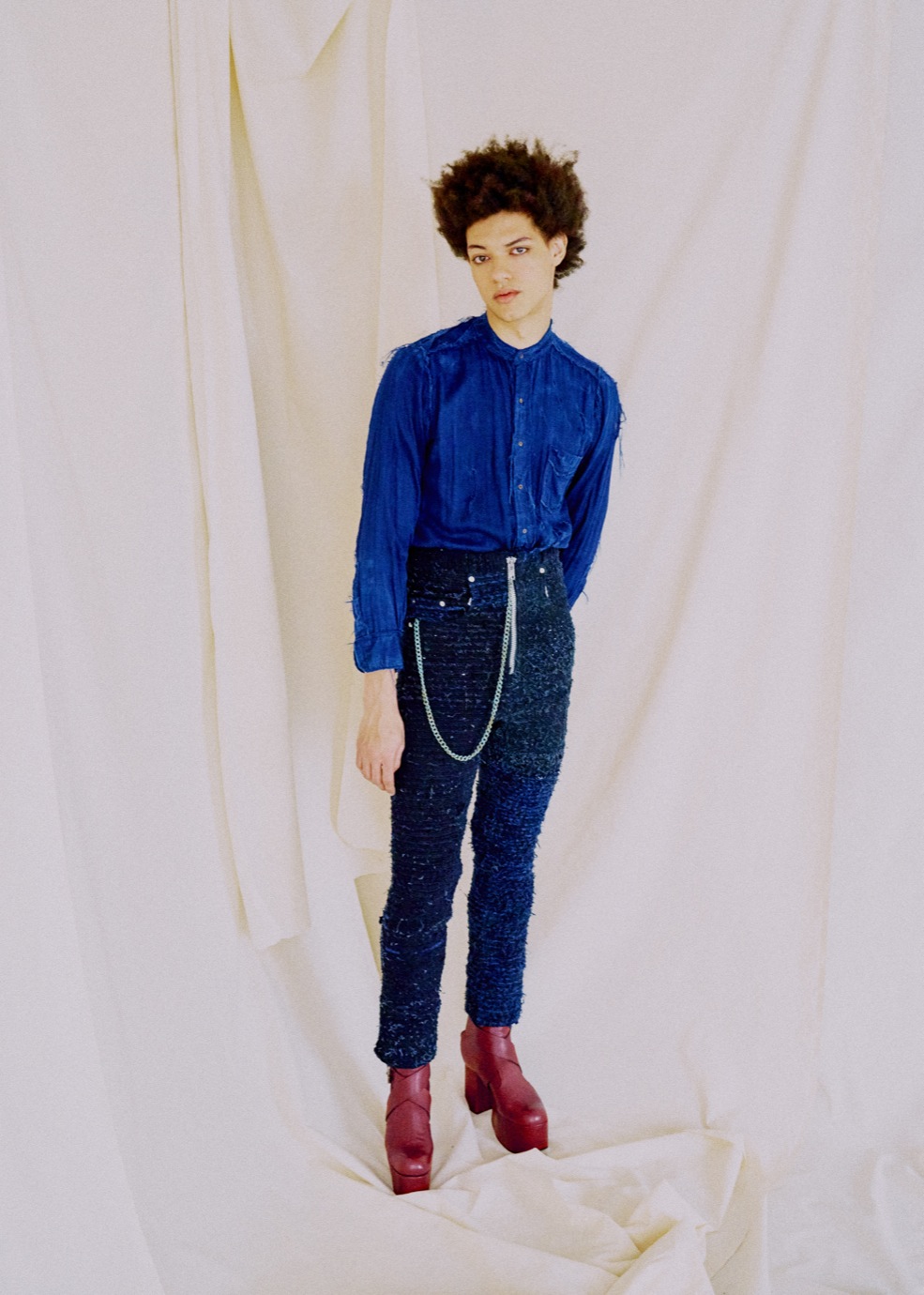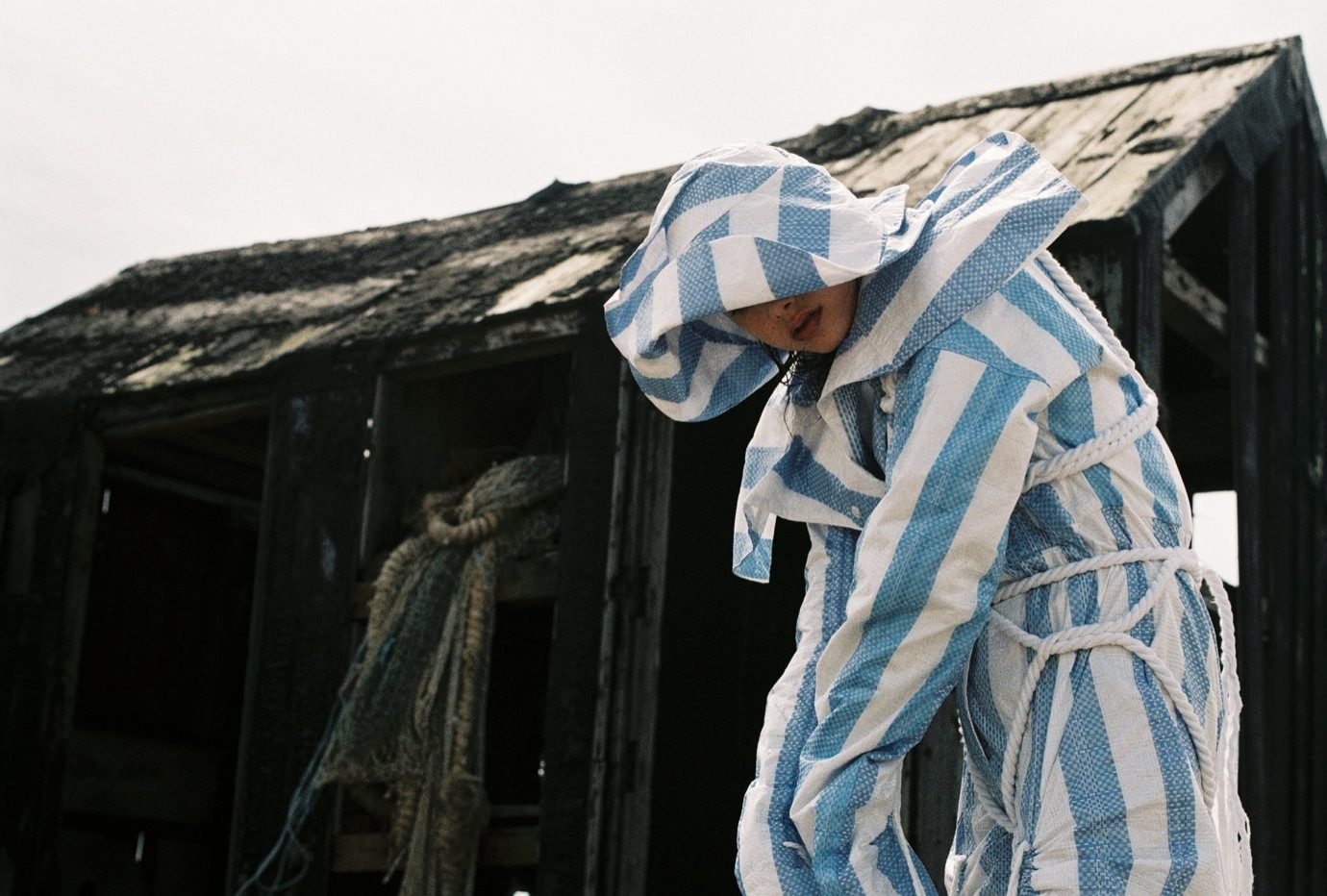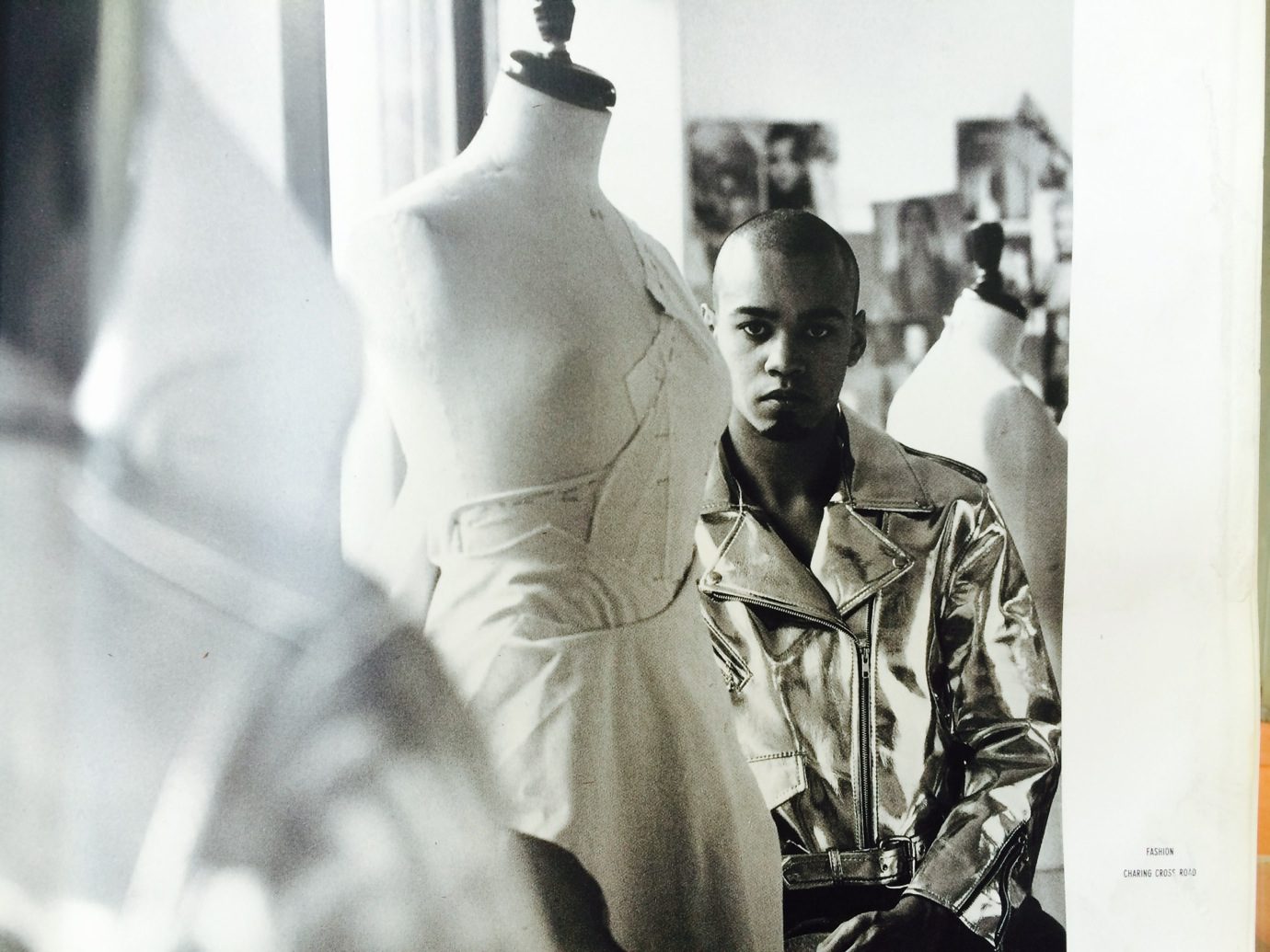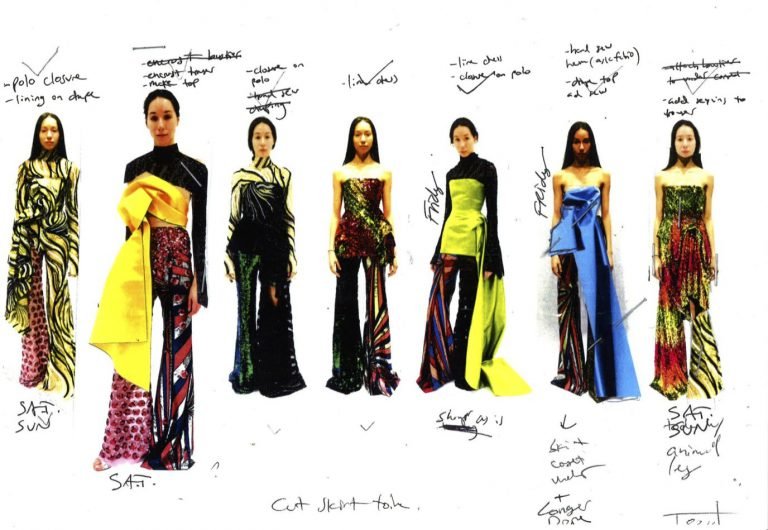“UNLIKE HIGH FASHION WHERE EVERYTHING SEEMS TO BE PERFECT, I SEE MORE BEAUTY IN THE IMPERFECTIONS BECAUSE THEY ARE WHAT MAKE US UNIQUE.”
Deciphering the poetry of Kozaburo Akasaka
The LVMH Prize nominee talks us through his most recent work.
In times when individuality is equally celebrated as banned, young talents such as Kozaburo Akasaka emerge to embrace authenticity and differentiation. The young Japanese designer graduated last year on the MFA Fashion Design and Society at Parsons, with his thesis collection ‘Brutal Sensitivity’ presented at New York Fashion Week. Shortlisted for the LVMH award, Kozaburo is now facing the ups and downs of running his own business. Nevertheless, his predominant focus remains on the creative side and he looks at his work as a ‘practical exercise’ for the philosophy behind Kozaburo. A poetic interpretation of all the contradictions that make us people unique, and a reflexion of his mantra as a creative: embrace the beauty of imperfections.
What have you been doing lately?
At the end of January, I had my presentation at New York Men’s Fashion Week, and I am very happy because the response was very good. Also, it was great opportunity to work with talents from my generation in a collaborative way, such as Kota Okuda for accessories design, Mat+Kat for casting and set design, Lana Jay Lackey for styling and Finn Mactaggart (PIGSUCKS) for music.
You graduated last year from the MFA Fashion Design at Parsons. How has life been ever since?
Life has been very hectic. For my MFA I had a generous scholarship, and that was a great support to focus on my creation and living. After graduation I had several freelance jobs to support my living and my creation. Working harder than ever.
What would you say have been the biggest challenges that you’ve faced along your journey?
Personally, I find the communication very challenging. Meaning, not just getting the exposure, but also translating my message and vision clearly. This challenge comes especially when I cannot show my collection in person. Nowadays, there is a lot of information on the internet and social media and it’s hard to attract an audience on a deeper and more complex level.
How was the process of making the decision to start your own business?
As soon as I started my MFA at Parsons, I was looking to do collaborations to meet people from the industry to educate and practice by myself, things about the fashion industry that could not be learned from academic education. After I had graduated from my BA at CSM, I wanted to work for a company first to gain some experience and learn before starting my own business; that is why I came to New York to work for Thom Browne for a few years. After working for them, I felt more prepared to start my own brand because I felt convinced I could express my own aesthetic. I’ve always wanted to do my own thing. It has always been my aim because I believe each person has a unique own story and I wanted to tell mine. I want to be able to express my unique aesthetic and creativity. Of course, it is challenging, and I am constantly challenging myself, but it is what I always wanted to do.
“I AM ALWAYS INTERESTED IN THE JUXTAPOSITION OF DIFFERENT ELEMENTS IN HUMAN PSYCHOLOGY AND BEHAVIOUR AND IT INSPIRES ME.”
Do you have time to design and take care of the creative side, while managing your brand as a business?
At the moment, product and creative vision come first and business second. Every outcome (collection and business) is an extension of my creative vision and a continuation of my practice. Of course, it’s a necessity to have a certain financial flow to continue practicing my creative vision. Luckily, I got into Dover Street Market in New York, and that is very helpful to get the exposure that I need as a young designer. All the production was done by myself for last season. For now, what I’m doing is trying my best and making sure that I create designs that I am happy with.
What is your opinion on the fashion education landscape? Is there anything that fashion schools should change or improve?
My opinion is that fashion is such a broad industry and that there are various channels to earn money, and express individually. I believe each student has a unique potential to succeed on a different level and segment in the fashion industry. So, I think it would be great if fashion schools had more space to help each student to articulate their own unique vision and interest.
How would you describe your signature?
I think the title of the collection that I presented when I graduated from Parsons last year describes my signature: ‘brutal sensitivity.’ This describes my personality, creative vision and practice. I am always interested in the juxtaposition of different elements in human psychology and behaviour and it inspires me. For example, looking at youth culture, I think Punk is a movement that looks aggressive but it was founded by the sensitive mind of youth at the time.
This concept applies for techniques I use to create collections, which is my signature. For example, I used Japanese sakiori to create recycled fabric by collecting cut off jean legs and then shredding them into strings and weaving them together again. I combined traditional tailoring skills and felting techniques to create jackets and trousers.
For construction I used a combination of artisanal hand stitching and invented techniques, such as gapped seams made by distorting the tension of the stitches on the machine. I also used custom made cracked buttons and hardware especially treated to corrode and rust the surface. So, in every aspect of this collection seemingly brutal actions are juxtaposed with sensitivity through the mindfulness of the process and an attention to craftsmanship.
What is the philosophy behind Kozaburo Akasaka?
For me, the most important message that I try to tell through my clothes is the importance of respecting human individuality and diversity. Unlike high fashion where everything seems to be perfect, I see more beauty in the imperfections because they are what make us unique and I like to embrace that. I see more beauty and luxury in pair of pants that a man fixed himself than seeing him spending $800 on the latest model of jeans by a big brand.
What does the future for Kozaburo Akasaka look like? What’s next for you?
I’m still trying to make the best of starting a career as an independent fashion designer, I started to enjoy collaborating with like-minded people from different fields. I feel I’d like to extend this movement and show my creative vision to more people as closely and slowly as I can. I am trying to live day by day, but for the future I would like to be in a position where I can help the younger generation and most importantly: the person I love.

